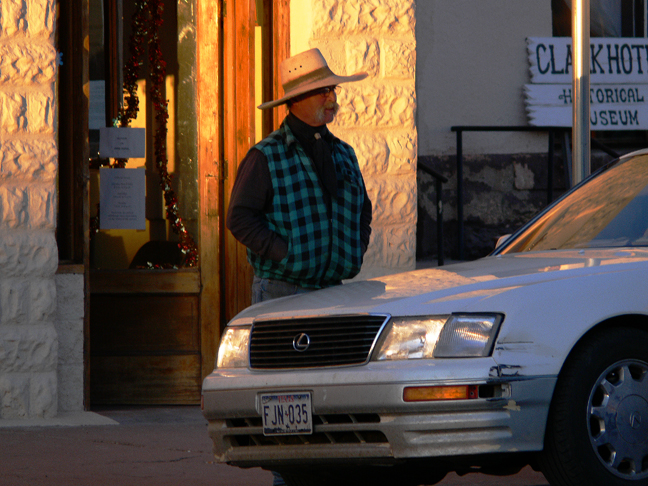
The very first time I went out West in the U.S. I went by bus. The farther west I got, the more different people seemed from what people were like in my home town of Chicago. And the thing about Chicago is that it's a very rich mixture of people, folks with all kinds of different ethnic heritage. But even so, the farther west I went, the more different people seemed from anything I'd known before. To put it simply, they were more "cowboy like". In other words, they began to resemble images I'd seen in movies, cowboy movies. But they were functional in their difference. They had a reason for being the way they were. They lived a completely different kind of life from people in Chicago. And that different kind of life placed different demands on them. The shape or style they acquired as a result fit their circumstances. They looked more cowboy like because many of them actually raised and worked with cows. Then something strange happened. When I got to Las Vegas and finally Los Angeles, I noticed something even more peculiar. People in Las Vegas and parts of Los Angeles were a different kind of different. Their shape and style seemed not to match any kind of life they led. Instead, it began to seem that people were dressing for a play, a play they wished they were in but that had nothing to do with the actual lives they led. And if I remember correctly, there was also a kind of popular philosophy in the air at the time advocating something like: "dress for the person you want to become". Now, that's an interesting notion. It suggests people will treat you however you want them to treat you as long as they get the right kinds of cues or clues from you. In other words, dress and act rich and important and people will more often than not think you are rich and important and treat you accordingly. But it doesn't always work. There are what has been called "shibboleths", telltales of your true membership in a class or group. For instance, even though you look rich and important, if someone were to ask you your opinion on cotton futures or whether or not interests rates were headed up and you didn't have an insightful answer, they might justly suspect you were posing. In other words, not authentic. There is another version of posing, though. It involves, not people trying to be something they aren't, but people assuming others are something they aren't. That other version goes by several names: profile, stereotype, prejudice. There are shibboleths available for disproving profiles, stereotypes, and prejudices too, but for some reason, many of us are not anxious, predisposed, or thorough about using them. Instead, without questioning, we are quick to lump people into gross categories whose generic attributes may not fit that person at all. The world does seem simpler that way, but we all lose. We lose because the world isn't simple. And, the richness of each of us as individuals is lost. How might we train our minds to be more astute as to the authenticity of those we encounter? Perhaps one way is to try wearing a different hat now and then, doing a little posing of our own, just to see what kinds of reaction we get and to make an attempt at understanding what it takes to be something other than what we already are. Back in the early 1960's there was a courageous white sociologist/journalist who colored his skin in order to pose as a black person. His experiences are chronicled in the book Black Like Me. It was and is an eye opener. But almost any kind of trying on of another person's hat is. Callouses, scars, dirt under finger nails, sleepy eyes, cringes, they are all signs of authenticity, but authenticity of what? It's a good thing to know. It helps one appreciate the richness and complexity of the world we live in and of the people we share it with. |
• Posted: Apr 22, 2011 08:39:58
• Comments Welcome
• Vote CoolPhotoblogs
• Purchase a Print
• Share
Sunday, December 20th, 2009 Van Horn TX USA |